Our magazine was one of the main popularizers of the recently emerged family of all-terrain vehicles – vehicles powered by low-pressure pneumatics. All-season, excellent cross-country ability, the ability not to disturb vegetation when driving through the forest or tundra – the advantages of vehicles of this type immediately attracted the attention of lovers of amateur technical creativity. And after the publication of drawings of one of the most successful designs – the Harp all-terrain vehicle by Vyacheslav Laukhin (see M-K No. 5, 1984) – hundreds of vehicles of a similar design appeared in our country.
Today we want to introduce readers to the Rysik all-terrain vehicle, created by students of a technical school in the city of Tchaikovsky, Perm Region, under the leadership of M. I. Psarev. It is curious that this machine was built in 1983 – even before its authors knew about the Harp. And despite the design being quite close to its analogue, it has a number of advantages: great compactness, the presence of a sprung steered wheel, and a removable cabin.
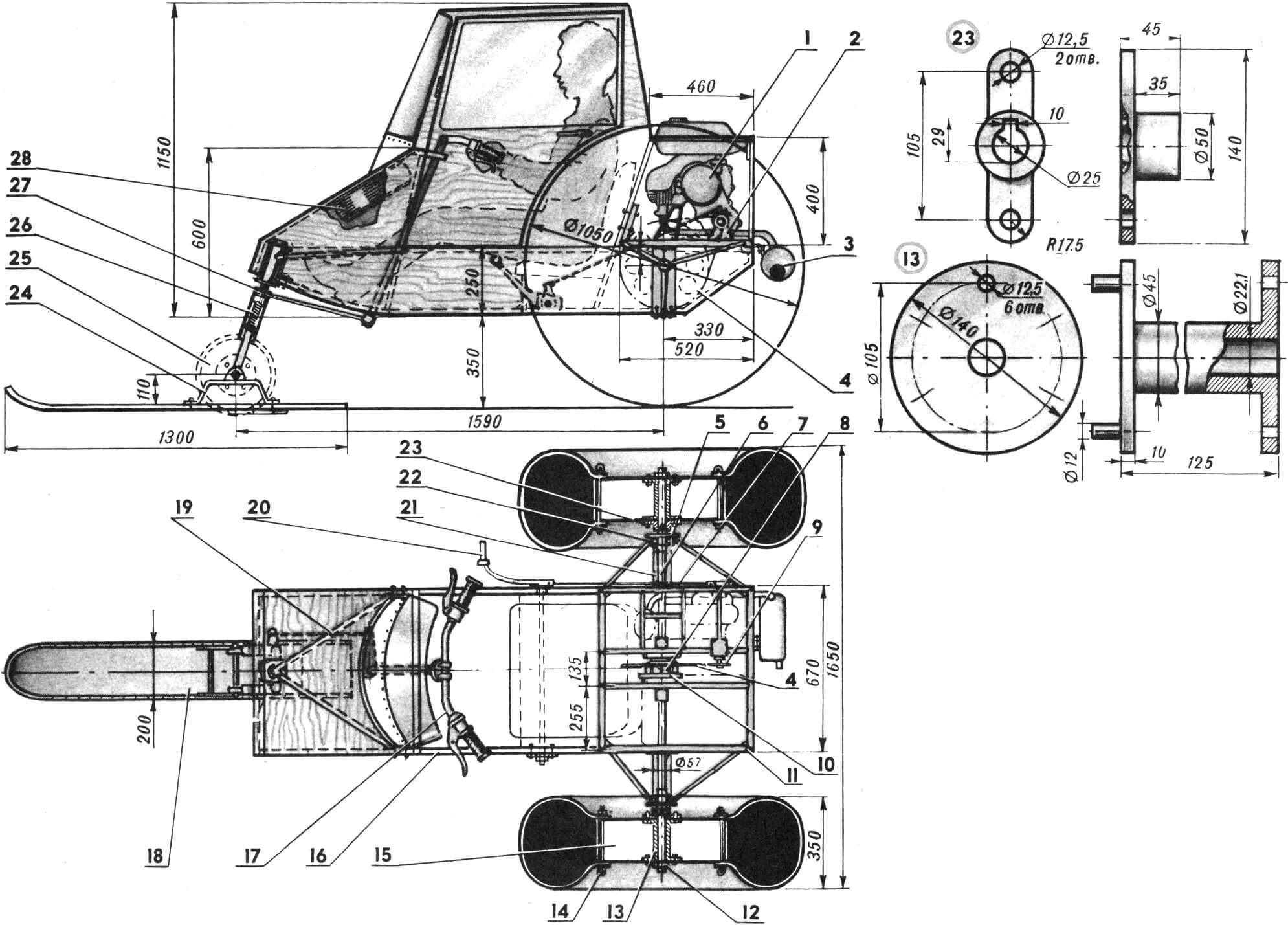
1 — Vyatka 150M engine, 2 — engine mounting bracket, 3 — muffler, 4 — driven sprocket Z=62, 5 — cover with oil seal, 6 — axle shaft, 7 — kickstarter rod, 8 — differential, 9 — drive sprocket Z =12, 10 — brake drum, 11 — frame, 12 — M16 nut, 13 — rear wheel hub, 14 — M6 stud for fastening the belt, 15 — wheel drum, 16 — body stringer, 17 — steering wheel, 18 — ski, 19 — fork mounting strut, 20 — kickstarter lever, 21 — axle shaft housing, 22 — bearing No. 205, 23 – coupling half, 24 – ski bracket, 25 — wheel (in summer version), 26 — fork shock absorber, 27 — steering rod, 28 — spare wheel.
When starting to design this all-terrain vehicle, we primarily proceeded from the desire to make an all-season and highly cross-country vehicle that would not care about swamps, snowdrifts, or any off-road conditions. Our circle at the Polytechnic of Light Industry already had experience in building vehicles: the family of snowmobiles we made was described in M-K No. 11 for 1980 and No. 11 for 1981. However, after a message appeared in the press about an all-terrain vehicle using low-pressure chambers, we wanted to try to make just such a vehicle.
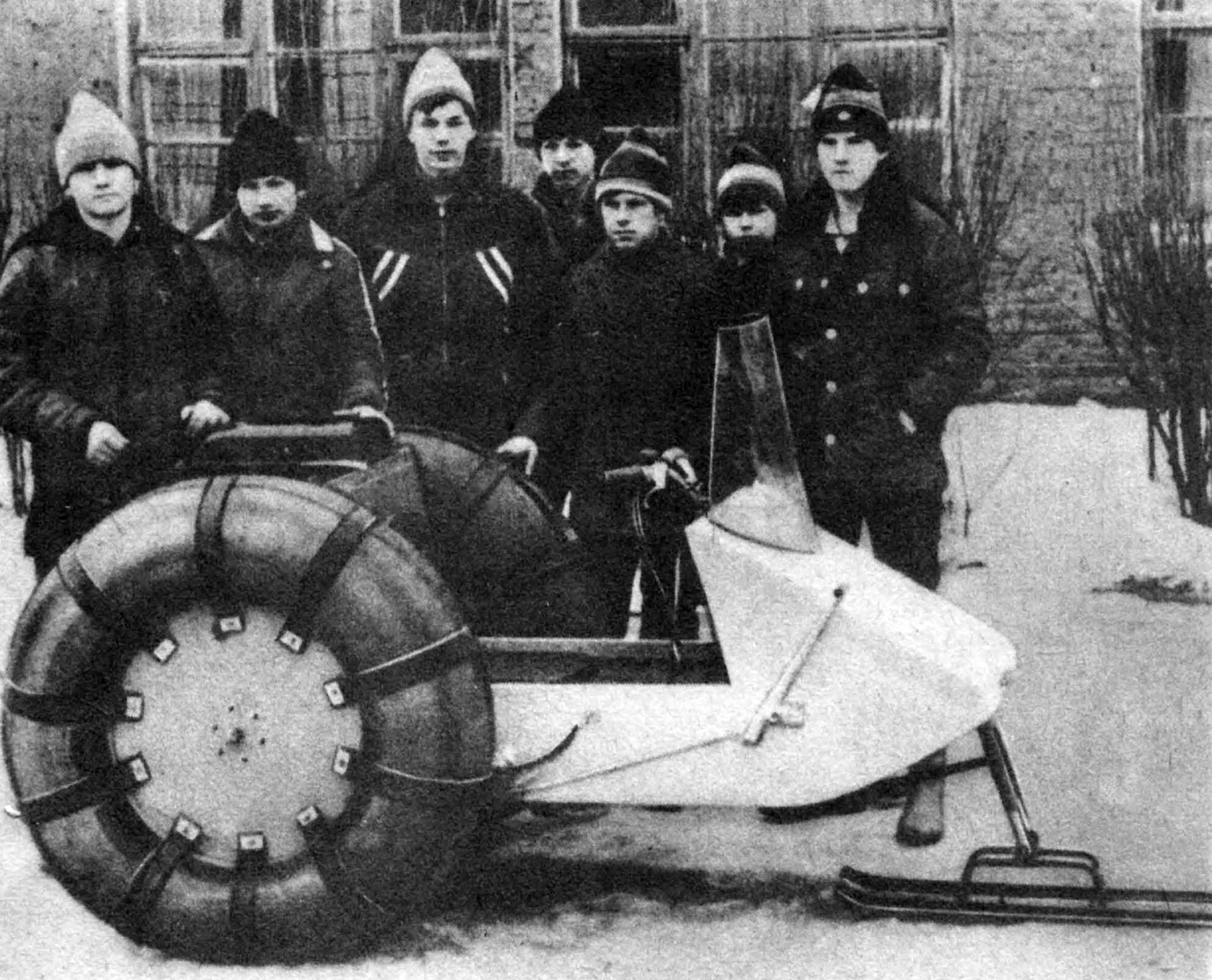
Regardless of the Tula people, we came to a scheme similar to “Harp”. True, the components of the Vyatka scooter were chosen as the base. The low engine power (5.5 hp) also predetermined the low load capacity; the latter made it possible to make the machine very compact and easy to store.
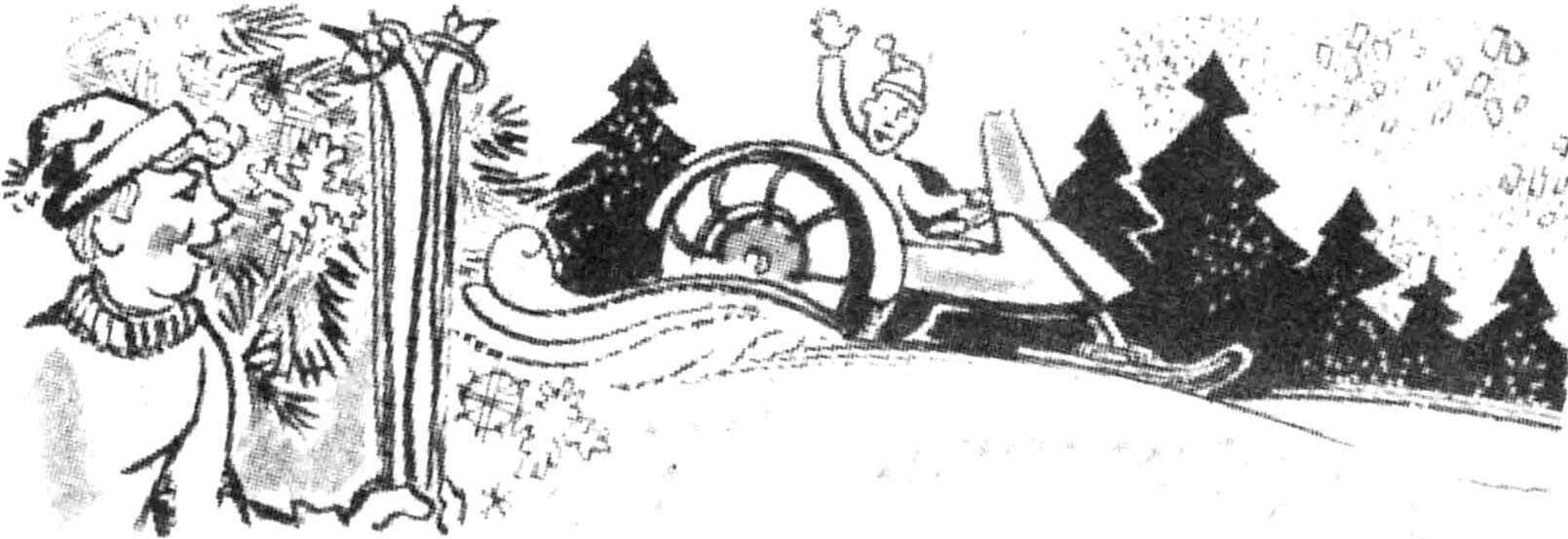
“Rysik,” as the guys called the all-terrain vehicle, is three-wheeled, single-seat, with a rear engine. The body is made of wood. The frame was made using pine planks with a cross section of 50X20 mm (vertical posts and stringers). The frame is covered with plywood with a thickness of 6 mm (sides) to 10 mm (bottom). As a result, the body turned out to be quite strong and light, and the total weight was small – about 90 kg.
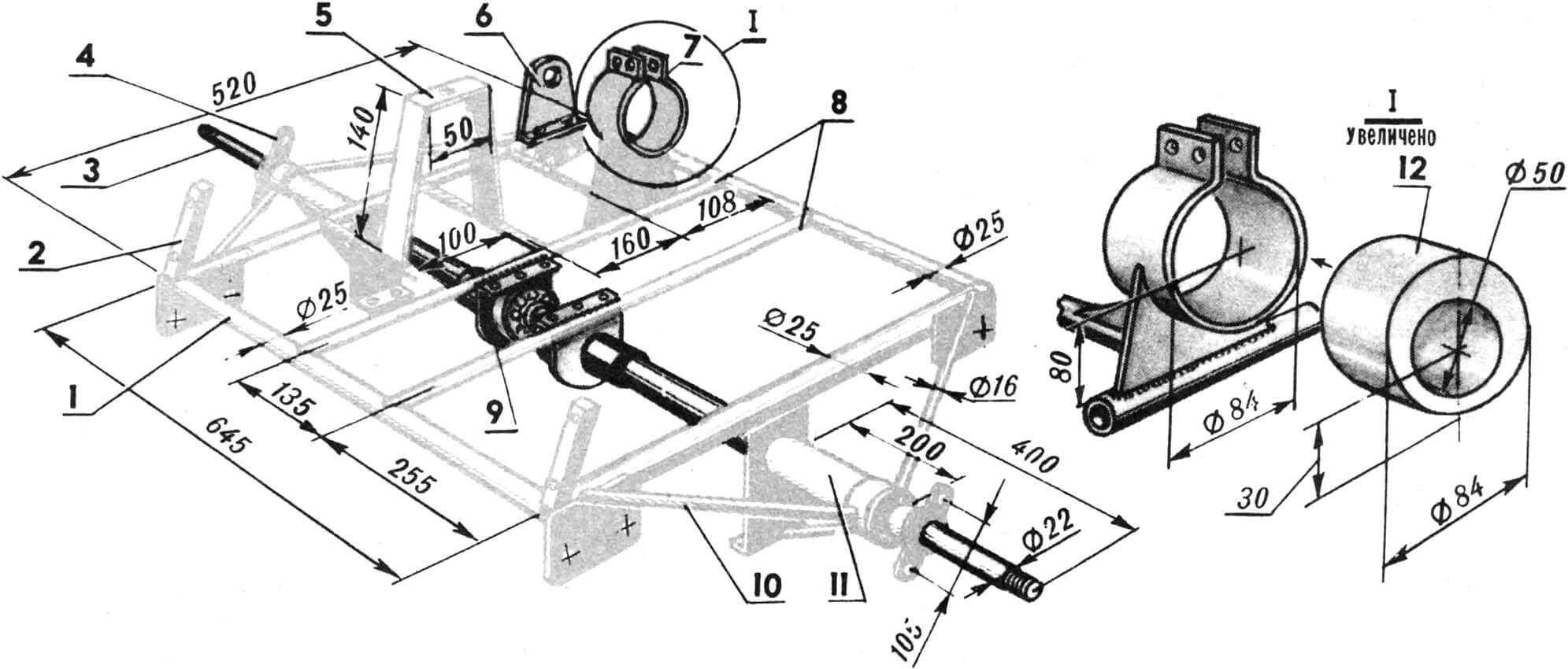
1 — transverse beam, 2 — vertical post, 3 — axle shaft, 4 — half-coupling, 5 — sub-motor bracket, 6 — mounting bracket for the starting shaft axis, 7 — engine mounting clamp, 8 — longitudinal beams, 9 — differential housing strut, 10 — strut, 11 — axle shaft housing, 12 — eccentric bushing for adjusting chain tension.
The frame is welded from pipes Ø 25 mm (struts Ø 16 mm) and installed in the rear of the body. The engine is attached to a special sub-motor bracket. Transmission – single-stage chain drive (sprockets Z=12 and Z=62). The drive shaft consists of two axle shafts and a differential from the SZD motorized stroller installed between them. The latter is mounted on bearings inside a special housing, without a crankcase. The windows in the differential are closed with aluminum plugs. The brake disc is installed inside the differential housing on a special ring. The brake drive is cable, although it is also possible to use hydraulics – for example, from the same motorized stroller. The carburetor throttle control and gear shifting systems are preserved in the same form as on the Vyatka scooter.
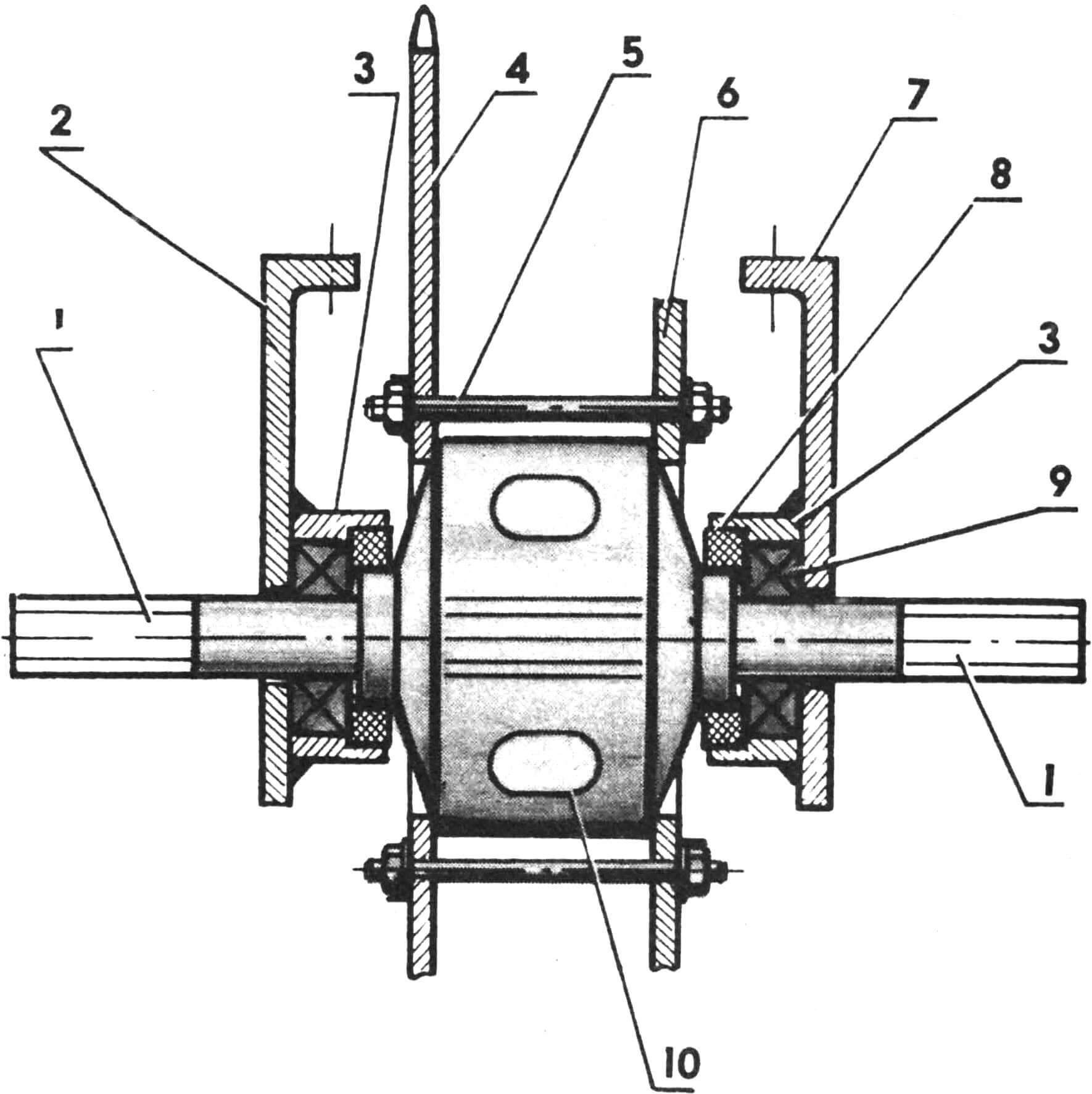
1 — bevel gear shanks, 2, 7 — differential housing struts, 3 — bearing housings, 4 — driven sprocket Z=62, 5 — tie rod, 6 — ring for fastening the brake disc, 8 — oil seal, 9 — bearing No. 205, 10 — differential window plug.
Starting the engine using a kickstarter. The design of the launch system is clear from the figure.
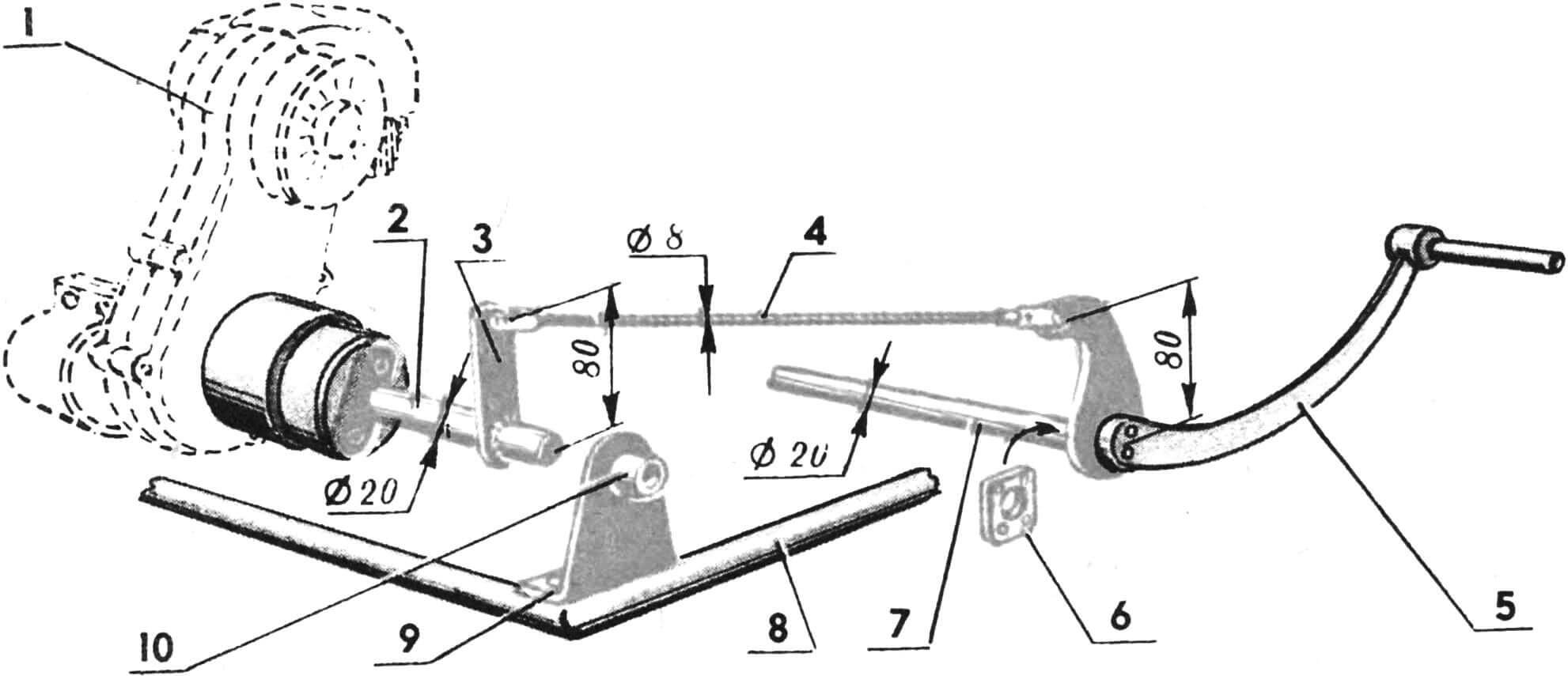
1 – engine crankcase, 2 – starting shaft, 3 – bracket, 4 – kickstarter rod, 5 – kickstarter lever, 6 – spacer, 7 – kickstarter axle, 8 – rear axle frame, 9 – starting shaft mounting bracket, 10 – bushing ( bronze).
The drive wheels on the low-pressure chambers turned out to be like two peas in a pod, similar to the Harp wheels, so it’s not worth describing their design.
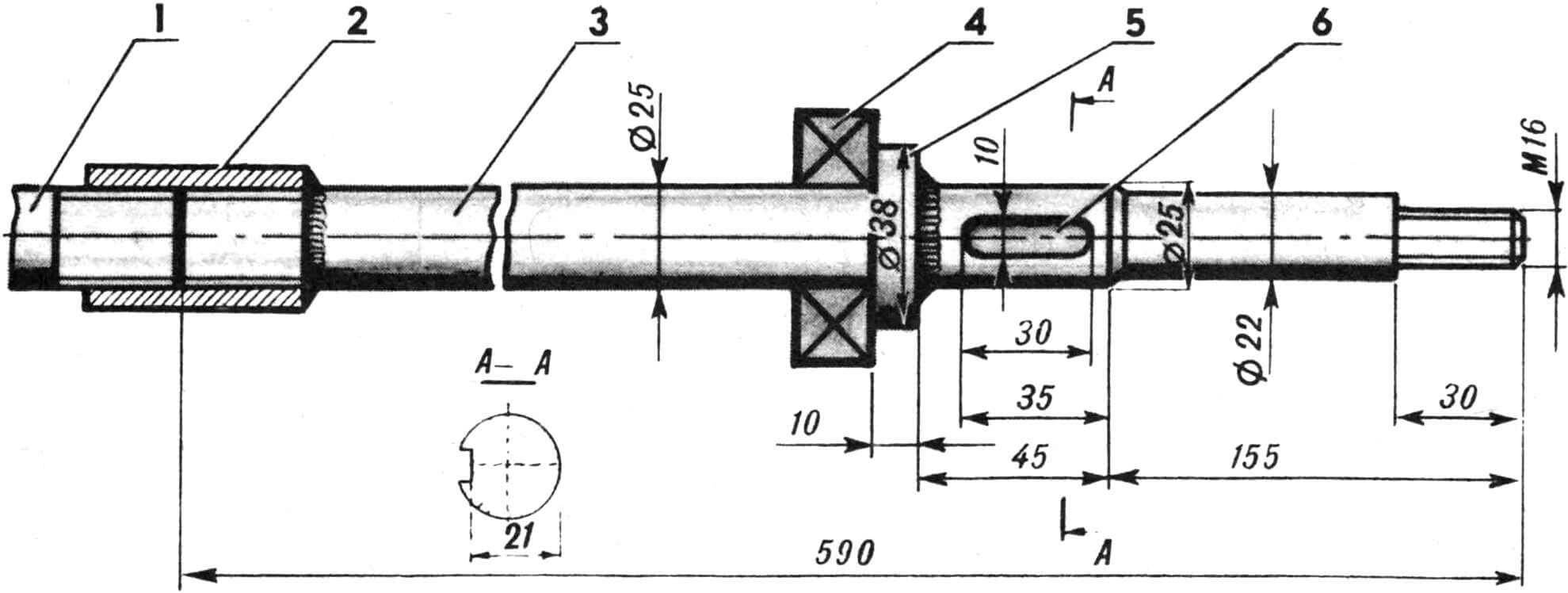
1 — differential bevel gear shank, 2 — splined clutch, 3 — axle shaft, 4 — bearing No. 205, 5 — thrust ring, 6 — keyway for fastening the coupling half.
The front steering wheel is borrowed from the kart (model B-28). It is installed in a homemade fork that has two shock absorbers with springs from a moped. The fork axis passes through a bushing attached to the body on struts. The steering wheel, along with the gas and brake levers, is taken from the Vyatka.
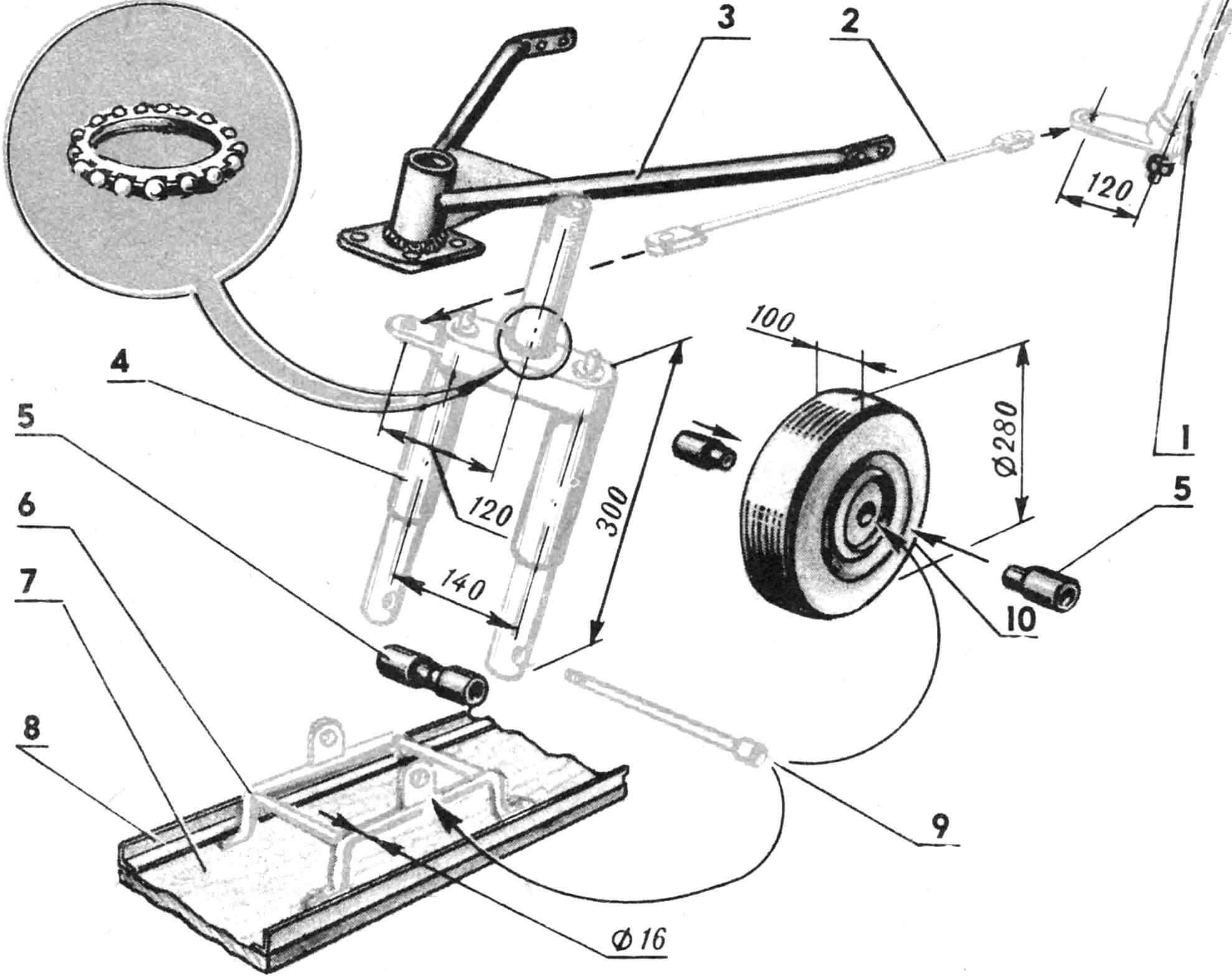
1 — steering column, 2 — steering rod, 3 — fork mounting strut, 4 — fork shock absorber, 5 — split spacer, 6 — ski bracket, 7 — ski, 8 — edge (angle 25X25 mm), 9 — axle, 10 – wheel (models B – 28).
In winter, instead of a wheel, a ski made of thick plywood is installed, edged around the perimeter with a steel angle with a section of 25X25 mm. Practice has shown that it is better to use a spring instead of a ski mounting bracket.
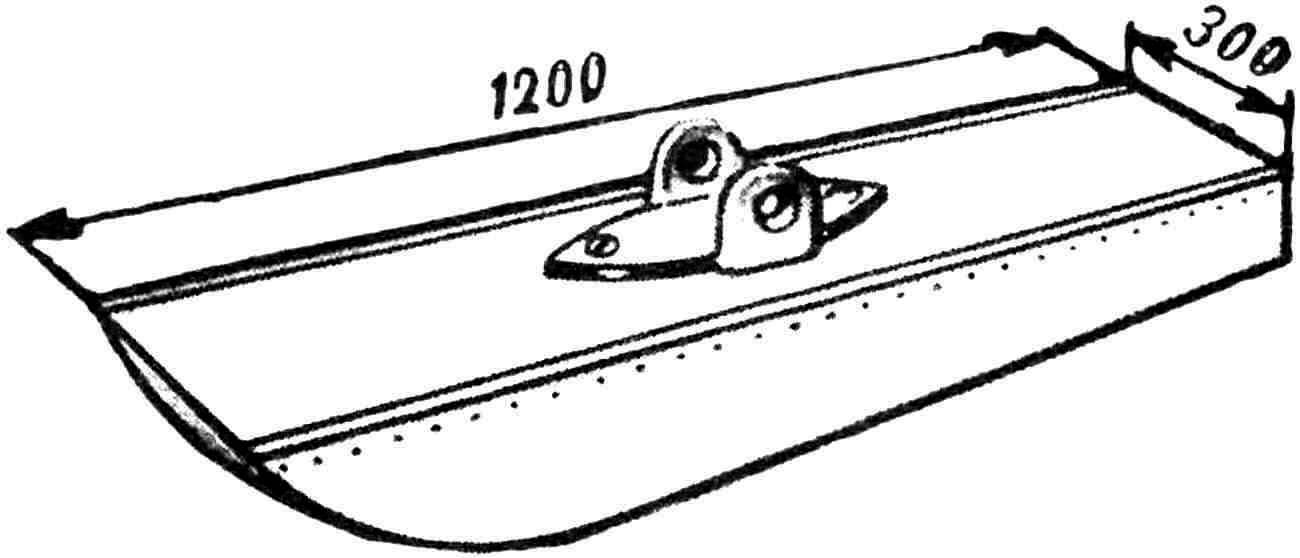
To move on water in the summer or on water and snow (in the spring, during the thaw), you can make a float ski. This will turn the all-terrain vehicle into an amphibious vehicle.
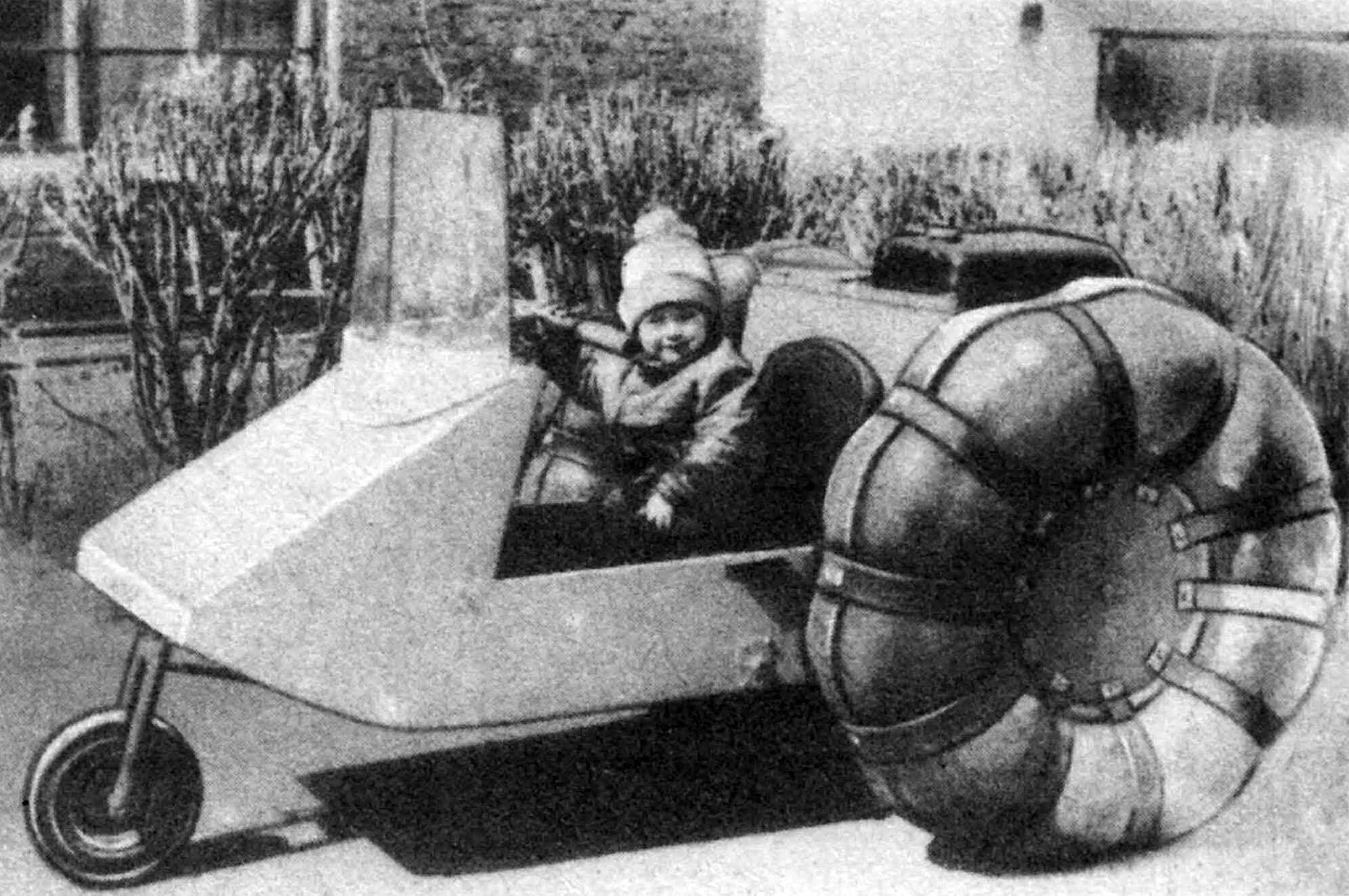

In conclusion, I would like to note that many years of operation of our station wagon have confirmed its high reliability. True, the engine power was still insufficient for steep climbs and difficult terrain, although on flat areas the speed reaches 40 km/h. Therefore, it is advisable to replace the motor with a more powerful one – for example, from a Tourist scooter. You can also equip the all-terrain vehicle with electrical equipment – a battery and a headlight.
M. PSAREV, Tchaikovsky, Perm region.



